Tilia Americana Tree
- March 19, 2024
- 0 comment
Tilia Americana, commonly known as American basswood or American linden, is a magnificent tree species native to North America. It holds a special place in both natural ecosystems and human culture due to its remarkable characteristics and versatile uses.
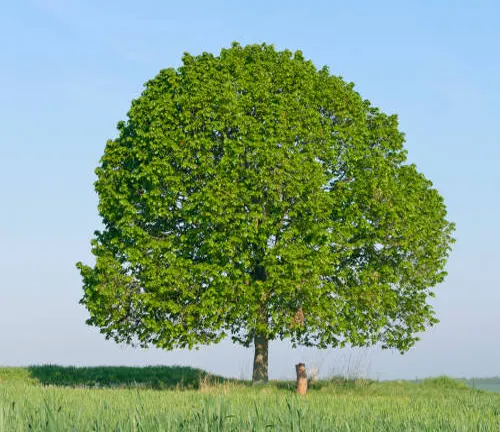

The flowers are fragrant and attractive to bees, producing small, nut-like fruits. American basswood is valued for its fine-grained wood, which is used in carpentry, cabinetry, and carving. Additionally, its soft and lightweight wood makes it ideal for making musical instruments such as guitars and pianos.
American basswood typically grows to heights ranging from 60 to 120 feet, with a broad and rounded crown. Its heart-shaped leaves and fragrant pale-yellow flowers make it easily recognizable, especially during the flowering season in late spring to early summer.
Characteristics of Tilia Americana Tree
| Characteristics | Description |
|---|---|
| Scientific Name | Tilia Americana |
| Common Names | American basswood, American linden |
| Family | Malvaceae |
| Native Region | North America |
| Plant Type | Deciduous tree |
| Size | Typically grows to heights ranging from 60 to 120 feet |
| Leaves | Heart-shaped leaves with serrated edges |
| Flowers | Fragrant pale-yellow flowers in clusters |
| Propagation | Propagated through seeds or cuttings |
| Drought Tolerance | Moderate drought tolerance once established |
Botanical Beauty of “Tilia Americana”

Tilia Americana, known for its elegant form and delicate features, exudes beauty with its broad, rounded crown and lush foliage, adding woodland elegance to any landscape. The heart-shaped leaves and fragrant flowers enhance its allure, making it a cherished choice among gardeners and nature enthusiasts alike for its aesthetic charm.
Woodland Elegance
In forested environments, Tilia Americana plays a vital role in maintaining ecological balance and biodiversity. Its dense canopy offers shade and habitat for diverse wildlife species, while its root system aids in soil stabilization and erosion prevention, contributing to the health and resilience of deciduous forests as a cornerstone species.
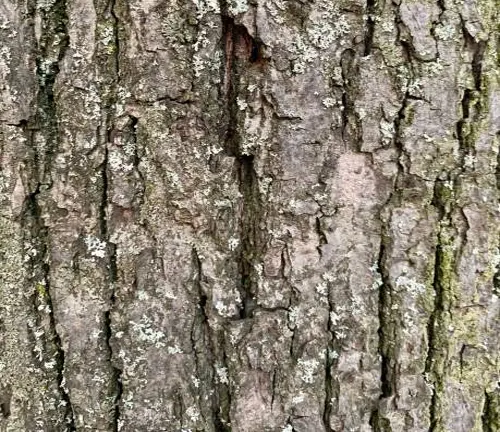
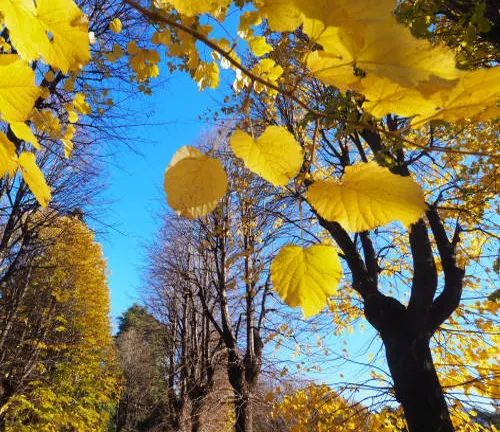
Ecological Importance
The ecological significance of Tilia Americana is profound, serving as a primary nectar source for pollinators like bees and butterflies, supporting insect populations and facilitating plant pollination. Birds and small mammals also benefit from consuming its seeds and foliage, enriching the local food web and ecosystem diversity.
Cultivation and Conservation
Thriving in moist, well-drained soils with full sunlight or partial shade, Tilia Americana demonstrates resilience but benefits from conservation efforts to preserve its natural habitat. Propagation methods include seed collection from mature trees or taking cuttings from established specimens to ensure sustainable forestry practices and long-term species survival.

Fragrance
Tilia Americana captivates with its enchanting fragrance, particularly during the flowering season when the sweet scent of its pale-yellow flowers fills the air. This honey-like aroma attracts pollinators and captivates onlookers, inspiring cultural traditions and artistic expressions with its delightful perfume.

Soil Stabilization
Beyond its aesthetic appeal, Tilia Americana serves a practical role in soil stabilization with its extensive root system anchoring soil to prevent erosion on slopes and riverbanks. This valuable contribution makes it an asset in landscaping projects and restoration initiatives aimed at combating soil erosion and land degradation effectively.
Common Uses
Throughout history, Tilia Americana has been valued for its versatile applications. The lightweight wood is prized by artisans for carving, cabinetry, and musical instruments, while indigenous peoples traditionally used inner bark fibers for weaving ropes, mats, and baskets for practical and ceremonial purposes.
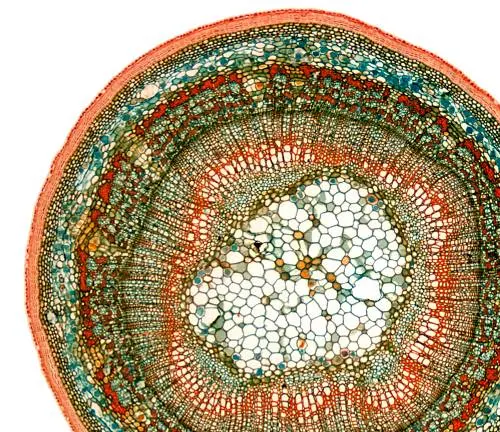
Benefits
The benefits of Tilia Americana extend beyond tangible uses to encompass cultural and symbolic significance. Revered for its beauty, resilience, and ecological importance, this tree serves as a reminder of interconnectedness in nature and the importance of preserving our natural heritage for future generations.
Different Species

Tilia cordata
(Littleleaf Linden or Small-leaved Linden)
Also known as Littleleaf Linden or Small-leaved Linden, is a tree species from the Tilia genus, recognized for its small heart-shaped leaves and fragrant yellow flowers. Originating from Europe and Western Asia, Tilia cordata is esteemed for its ornamental charm, commonly found in parks, gardens, and urban landscapes for its aesthetic appeal.
Tilia platyphyllos
(Large-leaved Linden or Broad-leaved Linden)
Tilia platyphyllos, or Large-leaved Linden/Broad-leaved Linden, is a tree species in the Tilia genus distinguished by its large ovate leaves and clusters of fragrant cream-colored flowers. Native to Europe, it is valued for its shade tolerance and attractive foliage, making it a favored option for landscaping and urban planting projects.

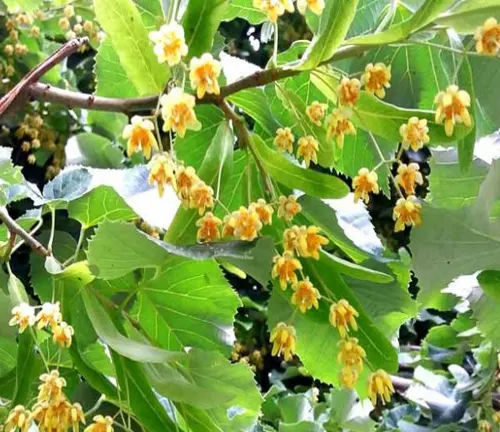
Tilia tomentosa
(Silver Linden or White Linden)
Tilia tomentosa, known as Silver Linden or White Linden, is a tree species native to southeastern Europe and western Asia, notable for its silver-gray foliage and fragrant yellow flowers. Appreciated for its ornamental value, Tilia tomentosa is often chosen for its shade provision, beauty, and ability to thrive in urban environments.
Frequently Asked Questions (FAQs)
- Is Tilia Americana native to North America?
- Yes, Tilia Americana, also known as American basswood or American linden, is native to North America.
- What are the common uses of Tilia Americana?
- Tilia Americana has been traditionally used for woodworking, including carving, cabinetry, and musical instrument making. Its inner bark fibers were also utilized for weaving and crafting.
- How tall does Tilia Americana typically grow?
- Tilia Americana can grow to heights ranging from 60 to 120 feet, making it a large deciduous tree.
- Are the leaves of Tilia Americana edible?
- While not commonly consumed, the leaves of Tilia Americana are not known to be toxic and have been used in herbal teas and infusions.
- Does Tilia Americana attract pollinators?
- Yes, Tilia Americana produces fragrant pale-yellow flowers that attract pollinators such as bees and butterflies.
- Is Tilia Americana tolerant of drought conditions?
- Tilia Americana exhibits moderate drought tolerance once established, although it generally prefers moist, well-drained soils.
- What is the lifespan of Tilia Americana?
- Tilia Americana can live for several decades to over a century, depending on environmental factors and growing conditions.
- Are there any special considerations for planting Tilia Americana in urban areas?
- Tilia Americana is commonly planted in urban landscapes due to its ornamental value and tolerance of urban conditions. However, care should be taken to provide adequate space for root expansion and regular maintenance to prevent issues with pests and diseases.
- Can I grow Tilia Americana in my backyard?
- Depending on your location and climate, Tilia Americana may be suitable for backyard cultivation. It is important to consider its size at maturity and ensure proper spacing to avoid overcrowding.
- Is Tilia Americana considered an invasive species?
- No, Tilia Americana is not considered an invasive species. It is native to North America and plays a valuable role in forest ecosystems. However, it is essential to be mindful of planting it in appropriate habitats to prevent potential ecological disruptions.

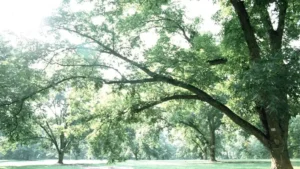

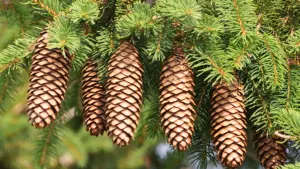



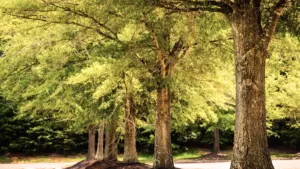
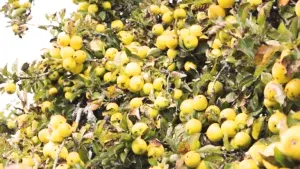
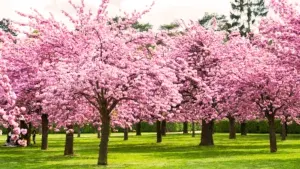
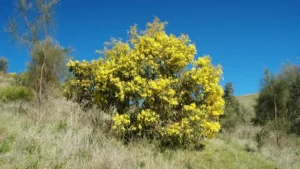

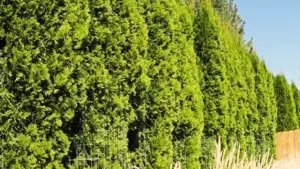
Leave your comment